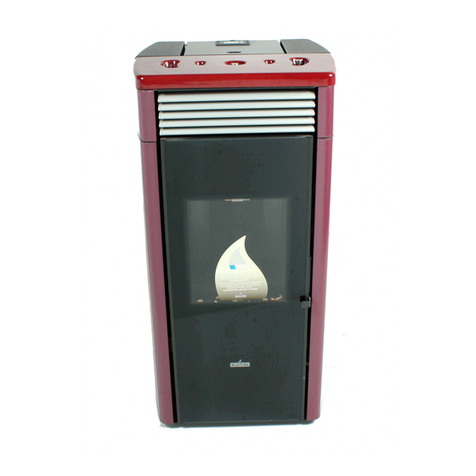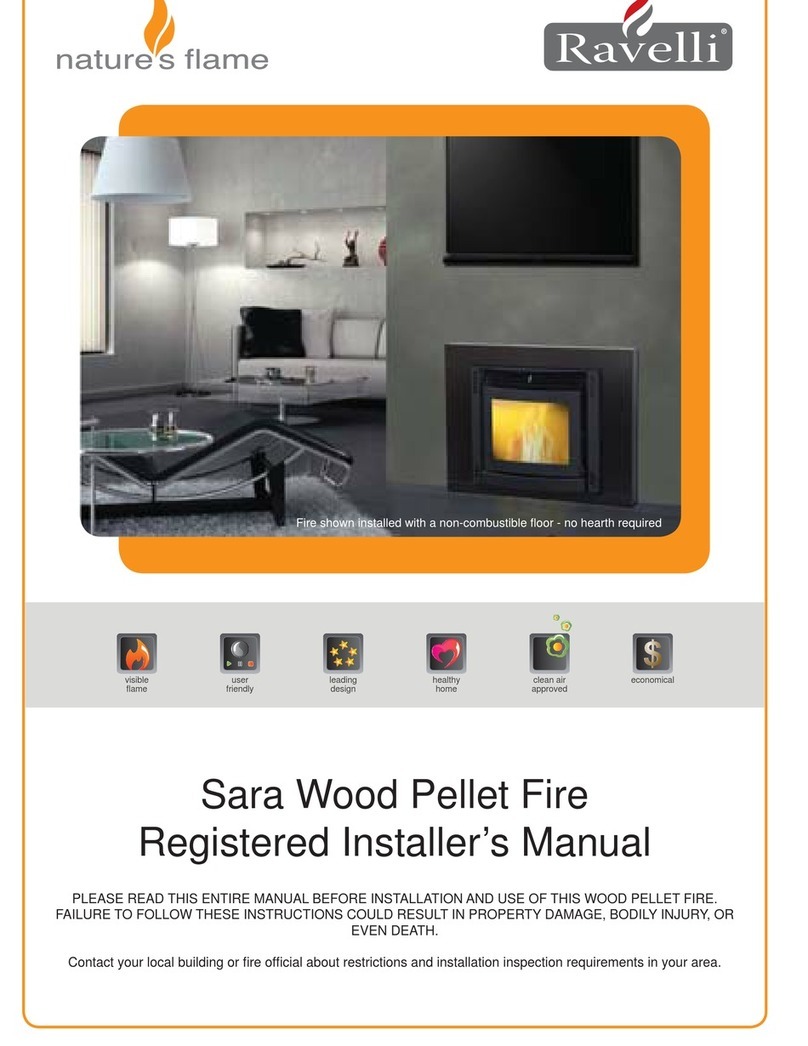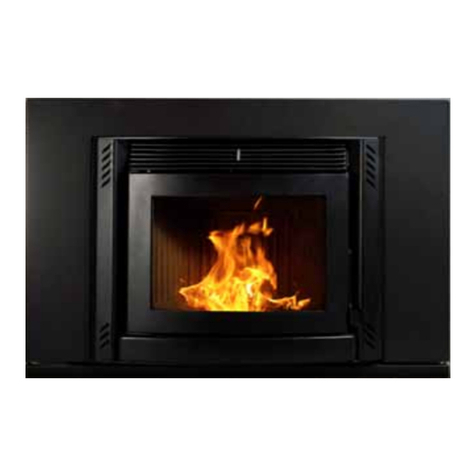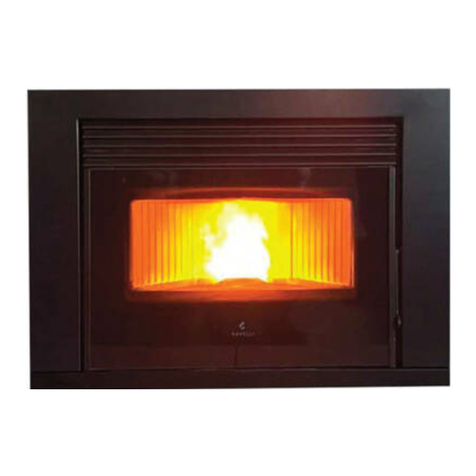All operations assume the fire is in the default OFF
mode - press button 3 to achieve this. Some operations
can also be performed in final cleaning – use caution if
the fire has been running. If the fire should come with
the wrong language set see “6.4 Menu Three - Select
Language (Setting the Language)” on page 10.
6.1 Menu Descriptions
The fire has various functions arranged in different
menus. Some of these menus are accessible by the
user, others are protected by a password and accessible
only by a qualified technician.
Press button [7] for 3-4 seconds to access the menus,
then use buttons [1] and [2] to scroll through the options,
and button [7] to Enter/Select.
The menus are as follows:
Menu 01 Set Clock
Menu 02 Set Crono (Programmable Thermostat)
Menu 03 Select Language
Menu 04 View Settings
Menu 05 State Stove (Fire Status)
Menu 06 Hours Work
Menu 07 Bank Data (protected by a password)
Menu 08 Reset Hours (protected by a password)
Menu 09 Default Settings (protected by a
password)
Menu 10 Select Recipe (protected by a password)
6.2 Menu One - Setting the Clock
To set the clock, proceed as follows:
1. Remove and reset the electric supply of the stove
using the general switch on the back.
2. The display will show FINAL CLEANING and then
OFF.
3. Press button [7]. (Menu 01 Set Clock will appear)
4. Press [7] to enter into this menu. DAY CLOCK will
appear:
5. Set the desired day by using [1] or [2] according to
the table shown below.
6. Press [7] to confirm
7. TIME CLOCK will appear on the display and the
current time will be shown. Change the hours of the
Display Meaning
01 Monday
02 Tuesday
03 Wednesday
04 Thursday
05 Friday
06 Saturday
07 Sunday
OFF Deactivated
5.6 Operating Instructions
The heater is completely automated and will self-regulate
the ignition phase, five levels of power and the switching
off phase, guaranteeing safe functioning. The burn pot
used for combustion allows most of the ashes produced
by the combustion of the pellets to fall into the lower ash
pan. However, it is recommended that you check the burn
pot every day, as not all pellets have high standards of
quality and could leave residue that is difficult to remove.
A special air-circulation function facilitates self-cleaning
of the glass, however, a slight greyish film cannot be
avoided after a few hours of functioning.
Pellets with a diameter of 6mm, manufactured to the AS/
NZ 4014.6 or higher must be used with the stove.
5.7 Safety Devices
The heater is fitted with sophisticated safety systems
so that, in the case of breakage of one of the individual
parts or defects in the flue, no damage will be caused
to the stove and the room in which it is installed. In any
case, when a problem arises, the pellets stop falling
immediately and the switch off phase is activated. The
corresponding alarm will be shown on the display. The
details can be seen in the “7.1 Explanation of Alarms” on
page 12.
5.8 Operating Precautions
•In case of faulty operation turn the stove off pressing
button no. 3.
•Do not manually load the fire pot with pellets.
•Any build up of unburned pellets inside the fire pot
after repeatedly trying to light the stove, must be
removed before further attempts.
•Do not use any fuels other than wood pellets.
•Should the ignition system be faulty, do not attempt to
light the stove using flammable materials.
6. Setting up your pellet re
































